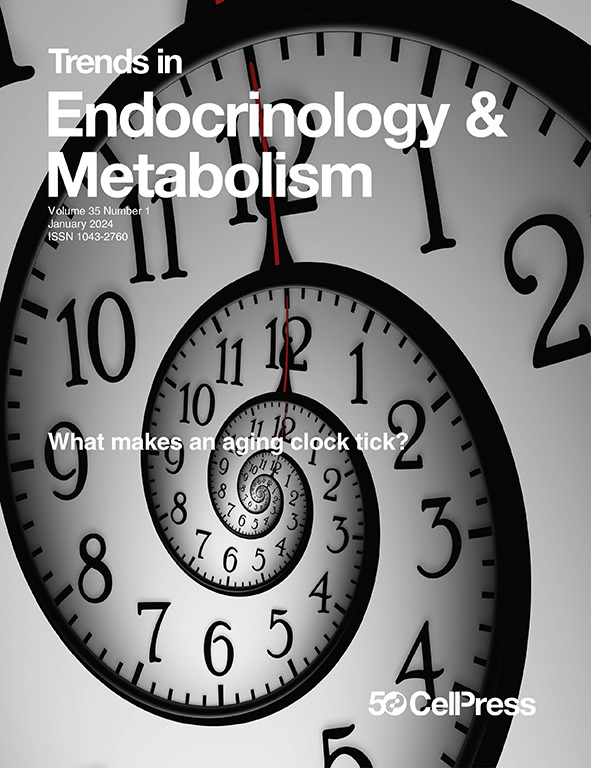肝糖生成增加和 2 型糖尿病。
IF 11.4
1区 医学
Q1 ENDOCRINOLOGY & METABOLISM
Trends in Endocrinology and Metabolism
Pub Date : 2024-12-01
Epub Date: 2024-05-29
DOI:10.1016/j.tem.2024.05.006
引用次数: 0
摘要
由于胰岛素抵抗,肝糖生成异常增加是导致 2 型糖尿病(T2DM)患者空腹状态下出现高血糖的一个重要原因。二甲双胍是治疗 T2DM 的最常用药物,据信它主要通过减少肝糖生成发挥作用。在此,我们将讨论肝糖生成增加是如何导致 T2DM 的,并回顾新近揭示的二甲双胍抑制糖生成的机制。此外,我们还分析了最近发现的参与调节葡萄糖生成的新决定因素,这些因素可能最终导致确定治疗 T2DM 的新型靶向治疗策略。本文章由计算机程序翻译,如有差异,请以英文原文为准。
Increased hepatic gluconeogenesis and type 2 diabetes mellitus.
Abnormally increased hepatic gluconeogenesis is a significant contributor to hyperglycemia in the fasting state in patients with type 2 diabetes mellitus (T2DM) due to insulin resistance. Metformin, the most prescribed drug for the treatment of T2DM, is believed to exert its effect mainly by reducing hepatic gluconeogenesis. Here, we discuss how increased hepatic gluconeogenesis contributes to T2DM and we review newly revealed mechanisms underlying the attenuation of gluconeogenesis by metformin. In addition, we analyze the recent findings on new determinants involved in the regulation of gluconeogenesis, which might ultimately lead to the identification of novel and targeted treatment strategies for T2DM.
求助全文
通过发布文献求助,成功后即可免费获取论文全文。
去求助
来源期刊

Trends in Endocrinology and Metabolism
医学-内分泌学与代谢
CiteScore
20.10
自引率
0.00%
发文量
98
审稿时长
82 days
期刊介绍:
Trends in Endocrinology and Metabolism (TEM) stands as a premier Reviews journal in the realms of metabolism and endocrinology. Our commitment is reflected in the publication of refined, concise, and highly impactful articles that delve into cutting-edge topics, encompassing basic, translational, and clinical aspects. From state-of-the-art treatments for endocrine diseases to groundbreaking developments in molecular biology, TEM provides comprehensive coverage.
Explore recent advancements in diabetes, endocrine diseases, obesity, neuroendocrinology, immunometabolism, molecular and cellular biology, and a myriad of other areas through our journal.
TEM serves as an invaluable resource for researchers, clinicians, lecturers, teachers, and students. Each monthly issue is anchored by Reviews and Opinion articles, with Reviews meticulously chronicling recent and significant developments, often contributed by leading researchers in specific fields. Opinion articles foster debate and hypotheses. Our shorter pieces include Science & Society, shedding light on issues at the intersection of science, society, and policy; Spotlights, which focus on exciting recent developments in the literature, and single-point hypotheses as Forum articles. We wholeheartedly welcome and encourage responses to previously published TEM content in the form of Letters.
 求助内容:
求助内容: 应助结果提醒方式:
应助结果提醒方式:


